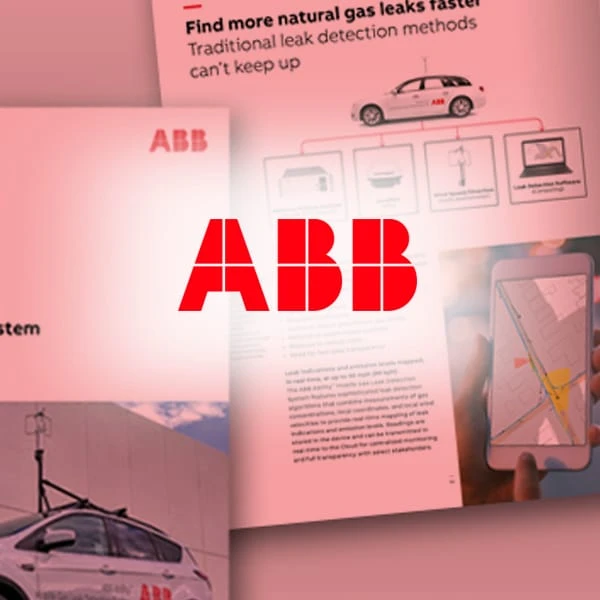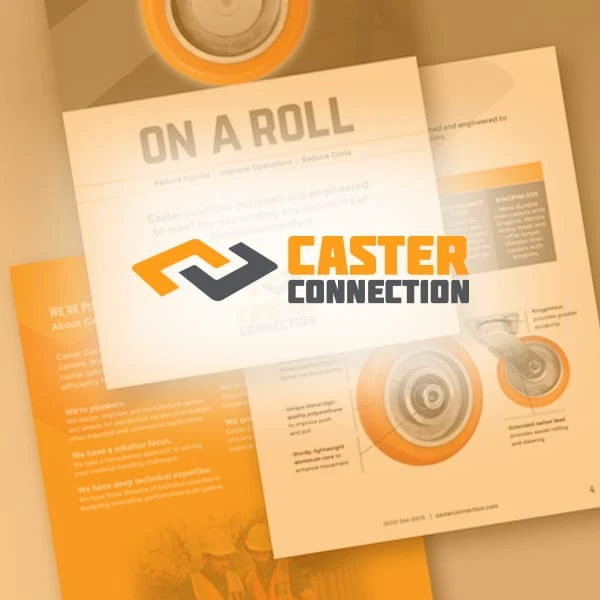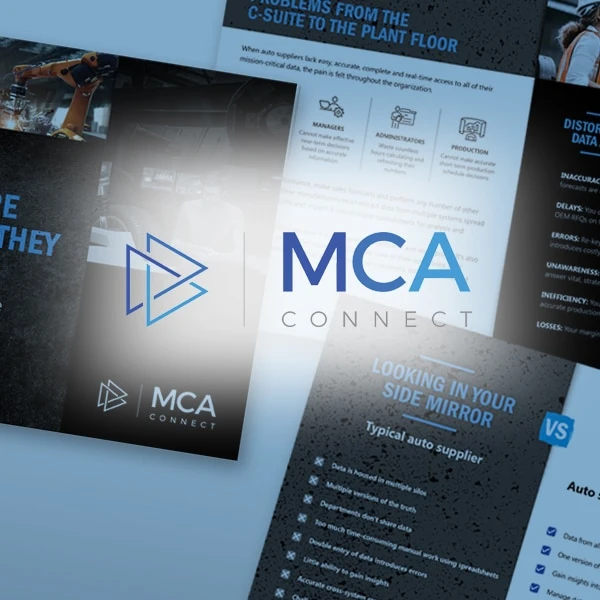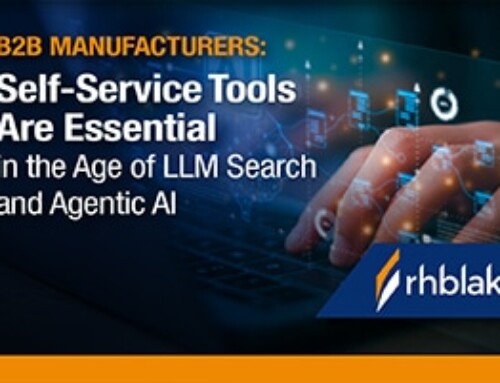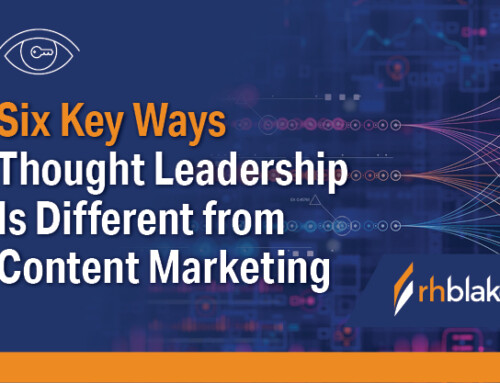Seven Ways Manufacturers Can Get Included in Google AI Overviews
The rules of SEO for B2B manufacturers have changed (again). With the rollout of Google AI Overviews, the traditional search landscape has been disrupted in a major way. For years, manufacturers looking to boost their online visibility relied on a familiar formula: target the right keywords, rank high in the organic search results, and earn clicks through blue links on the first page of Google search results.
But Google AI Overviews are reshaping this experience. Now, instead of directing users to a list of websites, Google often presents AI-generated summaries right at the top of the results page, complete with highlighted answers, citations and featured sources.
This shift has serious implications for manufacturers. According to a study we conducted using a popular search-engine ranking tool, average AIO Share Percentage for the top 100 manufacturers is 51% for brand mentions and phrases. In other words, when users look for a B2B manufacturing brand by name or search using a keyword that’s related to what a brand offers, that brand name or search term appears in the Google AI Overviews for 51% of the top 100 manufacturers. AIO Share Percentage is a metric that shows what percentage of all AI-generated content mentions are associated with the analyzed brand.
If your company’s website doesn’t appear in these AI-generated summaries, you may never get seen, especially for informational or research-oriented queries. As buying journeys become more digital and more self-directed, appearing in Google AI Overviews means the difference between getting shortlisted or getting overlooked. Let’s explore how Google AI Overviews are changing the search game, and what marketers at B2B manufacturers must do to ensure their content gets surfaced, cited and clicked.
An overview of Google AI Overviews
First, let’s get our head around Google AI Overviews. AI Overviews provide a snapshot of key information that uses generative AI to provide helpful information about a topic or question with links so users can easily explore more with information from the web. AI Overviews appear at the top of Google search results, and make it easier than ever for people to find the information they need and discover the richness of content and sites from across the web.
The key thing to understand about Google AI Overviews is that a majority of users never look past these results. According to Search Engine Land, AI Overviews decrease clicks to websites. Desktop clickthrough rates drop by a whopping 50% when an AI Overview is present. Mobile clicks fall by a third.
What this means in real life is that AI Overviews means less traffic to your website. Less traffic means fewer leads. We analyzed estimated organic traffic data for the top 100 U.S. manufacturers by market cap, comparing May 2024 to May 2025. The results were eye-opening:
- 70 out of top 100 U.S. manufacturers saw a decline in traffic
- Overall traffic dropped by 35.8%
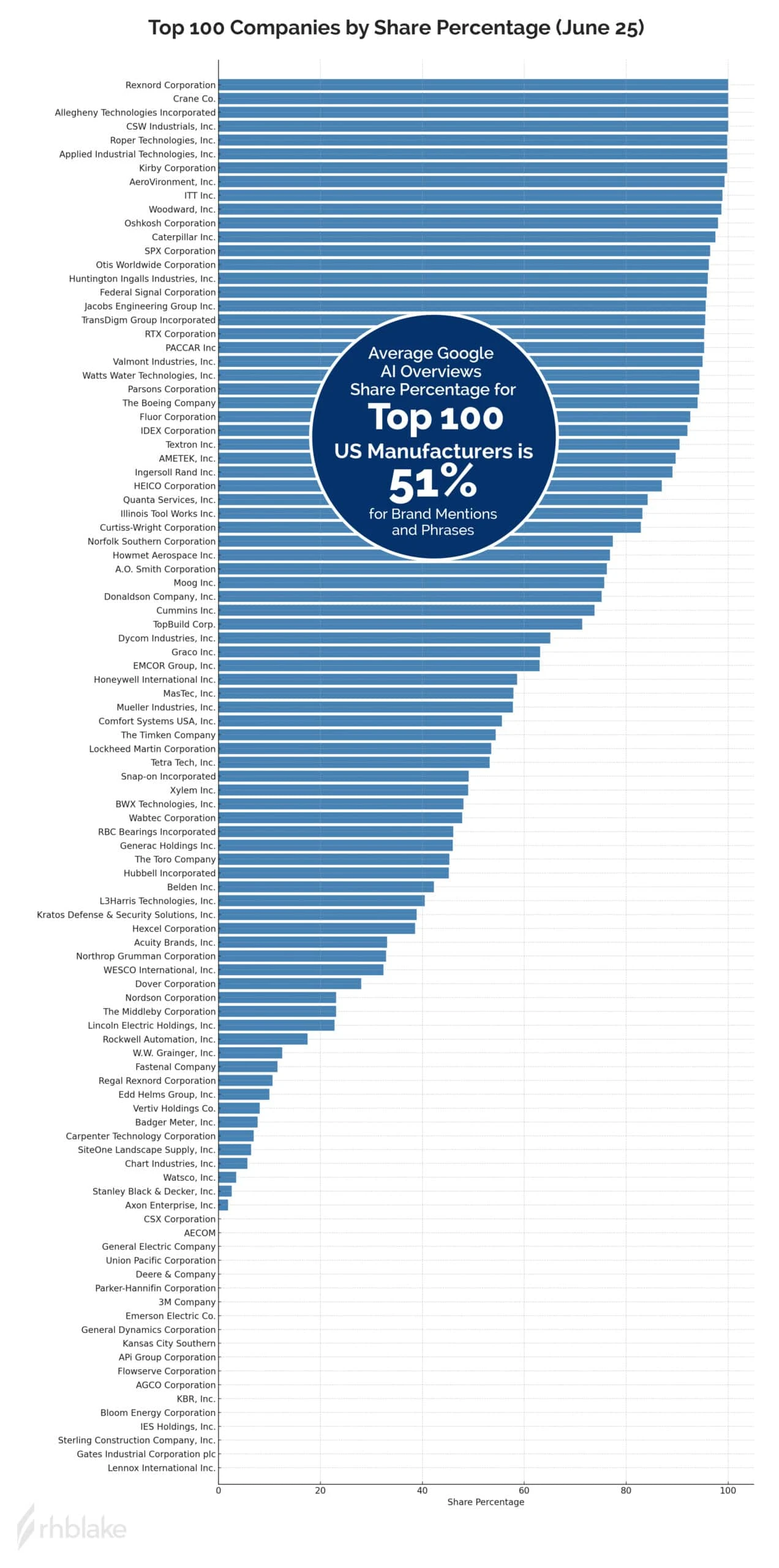
Source: SERanking.com
Steps to take as a B2B manufacturer
If you are a B2B manufacturer, regardless of your size, you must take a number of steps to ensure that your company has the best possible chance of appearing in around Google AI Overviews.
1. Make 51% your benchmark
Optimize your website and adjust your marketing program so that your website is cited in Google AI Overviews at least 51% of the time when users search for the solutions you offer.
2. Publish high-quality, buyer-centric content
Google favors content that demonstrates Experience, Expertise, Authoritativeness and Trustworthiness (E-E-A-T). In other words, what your buyers are looking for. Google AI Overviews prioritize content that demonstrates deep subject-matter expertise and is from credible, accurate sources. So, highlight your authority by publishing content that authoritative sources want to cite. Include author bios with credentials, and aim for backlinks from trusted and relevant sites. Focus on answering the “why” and “how,” not just the “what.” Provide comprehensive answers that go beyond basic definitions. Back up your claims with data, original research and studies, and link to reputable sources.
3. Structure your content for AI readability and quick answers
- Answer the query upfront: Use keyword search tools and your own research to discover what your buyers search for. Then give them what they are looking for by providing a clear, concise (1-2 sentence) summary in the first paragraph. AI Overviews often pull direct answers from the beginning of your content.
- Use subheadings that match search queries: If people are searching for “how to do X,” have a heading on your page that is close to that exact phrase.
- Focus on brevity: Highlight key points in a concise format that aligns with how Google presents AI-generated responses.
4. Optimize for informational and conversational queries
Experiment with Google search for your industry and you’ll discover that AI Overviews are designed to answer questions that people ask in a conversational manner. So, optimize your website content for natural language and conversational queries:
- Target informational keywords and long-tail keywords: AI Overviews are primarily triggered by informational queries (e.g., “what are perovskite solar cells,” and “how to lower levelized cost of electricity.”
- Think topics, not just keywords: Focus on covering broader topics in depth to help Google link your content to relevant concepts.
5. Leverage technical SEO and structured data
- Ensure your site is crawlable and indexable: Use Google Search Console to check for errors and submit XML sitemaps.
- Implement structured data (Schema Markup): Add schema for FAQs, how-tos, articles, and definitions. This helps search engines understand your content better.
- Optimize page speed and mobile responsiveness: A good page experience is crucial for both users and search engine crawlers.
- Maintain a clean site architecture: This helps bots easily index your content.
6. Build brand credibility and online presence
To get cited in Google AI Overviews, you have to focus your attention beyond search. Google, OpenAI and other AI-powered search tools pay attention to the publications, websites, authorities, and other areas of the web that affect your perceived level of Experience, Expertise, Authoritativeness and Trustworthiness. Your goal as a marketer is to influence these sources so that they influence Google AI Overview results. Here’s how:
- Build your brand reputation: The more your brand is mentioned across the web (authoritative blogs, news sites, industry articles, social media), the more likely AI search engines will recognize it as a notable entity.
- Engage in online communities: Participate in discussions on platforms like Reddit, LinkedIn and X that are related to your niche.
- Encourage user-generated content: Whenever possible and appropriate, encourage your customers, distributors, suppliers and partners to publish case studies, testimonials, social proof and other content.
7. Monitor and adapt
Getting cited in Google AI overviews is never a one-and-done event. After all, search habits change. Algorithms change. Referring websites come and go. This makes monitoring vital. You must monitor your placement in Google AI Overview results, and adjust your campaigns, programs and activity accordingly:
- Track AI Overviews for your keywords: Regularly run searches for your key topics to see if an AI Overview appears, and then study the sources it pulls from.
- Analyze traffic impact: Monitor changes in click-through rates and traffic for pages affected by AI Overviews.
- Update your content regularly: Google prioritizes fresh, accurate content.
- Be prepared for ongoing changes: AI Overviews are a new and evolving feature, so continuous monitoring and adaptation are crucial.
Conclusion
Google AI Overviews have fundamentally changed how your buyers discover, evaluate and engage with your manufacturing brand online. No longer is it enough to simply rank on page one. Now, the real estate that matters most is often above the fold, inside a generative summary created by AI. And if your brand isn’t cited there, you risk being left out of the conversation entirely.
For B2B manufacturers, this shift demands a new SEO mindset, one that blends technical excellence with authoritative content and a strategic presence across the digital ecosystem. From optimizing for E-E-A-T to structuring content for conversational queries, the path to inclusion in AI Overviews is clear, but it takes expertise, and the right partner.
Need help getting your brand into Google AI Overviews?
Contact RH Blake. We specialize in digital marketing strategies for B2B manufacturers. We help you adapt, optimize and stand out in today’s evolving search landscape.

"You guys met our expectations in every way. It [RH Blake Market Research] was the information we were looking for. Congratulations and Thank You!"
 Scott Griggs
Scott Griggs
Director of Services for Food Manufacturing and Food Service
ALS Global

"“I’ve gotten all that I’d hoped for from the RH Blake Growth Roadmap™ and more. Based on the research and insights, we adjusted our offering scope and sales approach. And this adjustment has been effective at generating new opportunities."
 Diane Reko
Diane Reko
President
REKO International

"RH Blake has been an outstanding partner. They deliver creativity, on time, and always so professional. We love working with them because of their perspective, support, and their efficiency in turning projects around quickly."
 Samantha Spano
Samantha Spano
Digital Product Marketing & Communications Manager
Industrial Automation Energy Industries
ABB
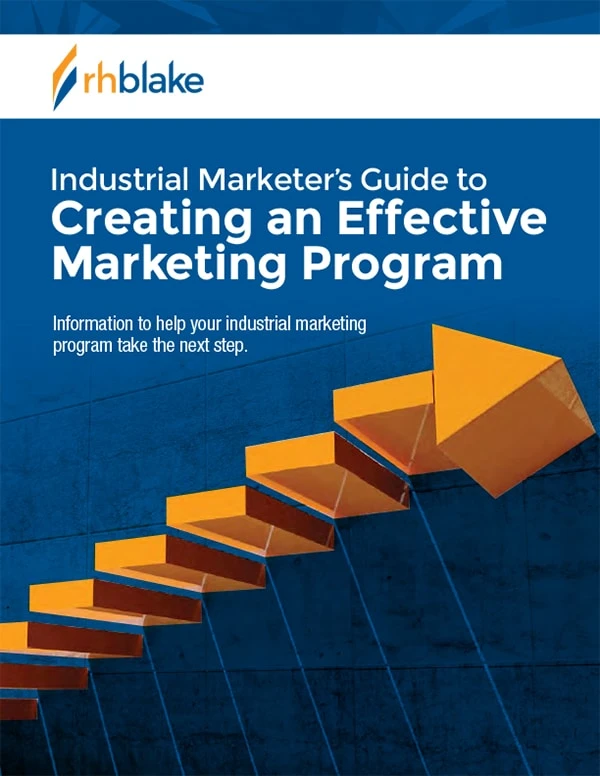
Industrial Marketer’s Guide to Creating an Effective Marketing Program
147 pages of actionable ideas to help you create a winning marketing strategy and program

Industrial Marketer’s Guide to Creating an Effective Marketing Program
147 pages of actionable ideas to help you create a winning marketing strategy and program
Related Clients



